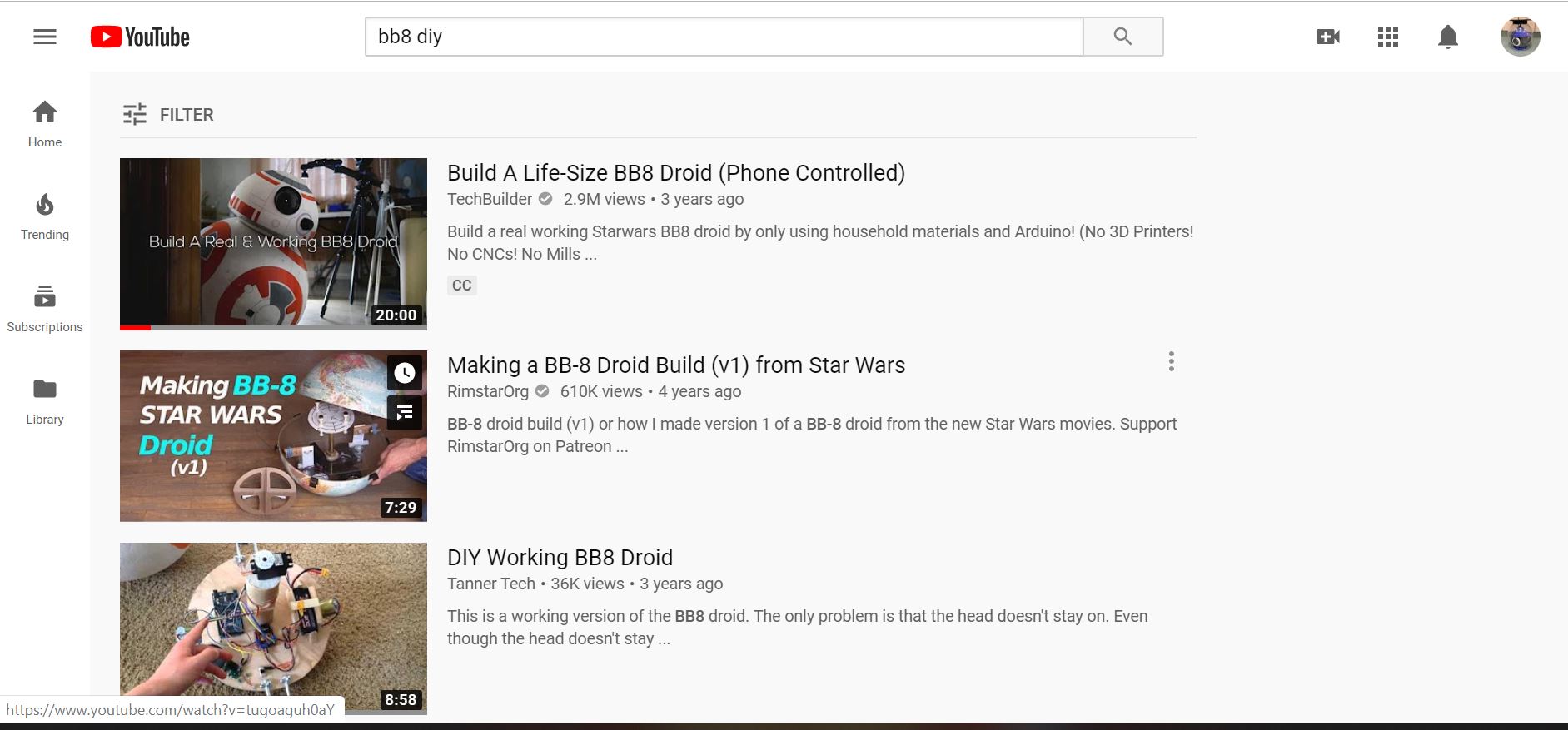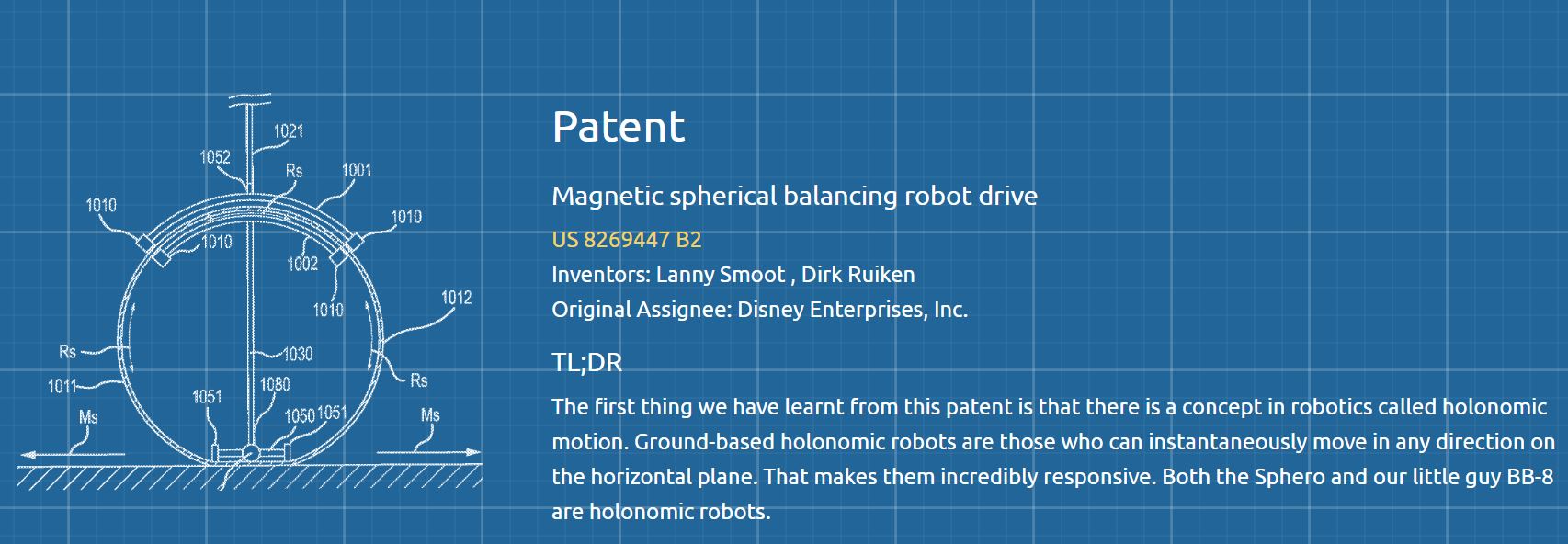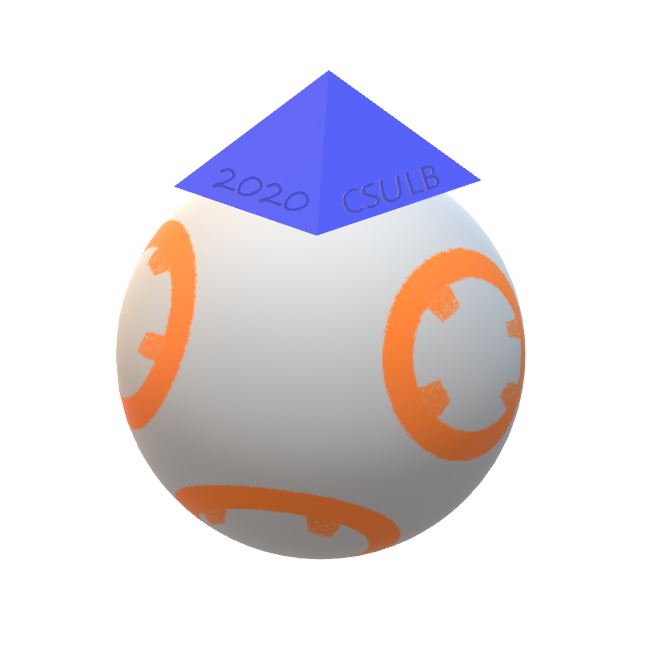GradBot – Fall 2019
Beginning Concepts and References
Author/s: Shannon Hormozian, PM, MST
Verification:
Approval:
Table of Contents
The Start of Something Wonderful
This group new we wanted to choose a project that had never been done before. We spent hours together researching and reading, trying to find anything that sparked our interest. It was our D&M, Taylor Manning, that first mentioned the idea of a remodeled version of the astro-mech droid BB8 from the Star Wars franchise. And the rest was history…
Background
During our research we came across this [1] video. And then this [2] one. Around every corner there seemed to be a DIY video detailing a remake of this bot with very different ideas. And from there we knew this is what we had to pick.
After that was hours of research. Could this even be done? A game plan was created. Our research began with this design from the Disney Studios. This design showed how the idea came about and what the inner working of a dream roller droid would be, and also included an amazing and interactive 3D model of both versions of their designs, internal and external. Of course, a senior design project for a couple of Electrical Engineers given only 16 weeks would be nowhere near as outstanding, but we were ready to try our best. The Sphero patent gave us a good idea of the work that would need to be put into this project.
This research was brought to the president of The Robot Company, who fell in love with the idea immediately, with the addition of a few personal tweaks.It’s Time For Our Version
As with all projects, the design process sees many different versions before a final drawing can be decided on. And even after a final is picked, changes are sometimes needed to bring the drawings to life.
For reference, we were closely following the second video mentioned, “Build A Life-Size BB8 Droid (Phone Controlled)”, as it was the most similar in size and level of difficulty we were looking for. In this video, an Arduino Uno was used along with a pololu motor driver, which worked our well because both the Arduino Uno and the 3dot v9 board work with a similar microcontroller. This video also gave us the original idea for our sphere, the canvas strips laid over a ball mold using a glue and water mixture which we would then sand till smooth.
Figure 3 shows the original design we came to our first meeting with. The “head” of BB8 has been replaced with a miniature replica of Walter Pyramid to embody out school spirit, and of course personally designed and 3D printed with CSULB and our graduating year. It was to be approximately 10-12 inches in diameter, giving us enough wiggle room for errors, and it would have been two 3D printed half spheres with a specially designed locking mechanism. Inside the sphere was going to be a small rover built from a 4-6 inch in diameter 3D printed bot with 4 mounted wheels and a platform designed to hold to v9 and all other electrical components.
The next design brought some new challenges to the table. Now The Robot Company wanted to downsize by almost half, make the sphere clear, have the internal bot be an aesthetically pleasing mini version of Walter Pyramid, and have the “head” be a graduation cap. To add to the electronics portion, we now were expected to have two modes, one mode would allow the user to move the robot manually with toggles on the ArxRobot app, and the second would be a follower mode. The follower mode would work similar to this [4] following luggage concept and we also took some notes from this [5] following cooler project. It was a lot to take in.
The Takeaway

Figure 5. (From left to right) Our first idea, Prototype 1.0, Prototype 2.0, GradBot Final Print (pictured without sphere)
GradBot went through many evolution’s throughout this semester. The references found online helped get us through many of the first challenges and helped us answer a lot of questions. Reviewing the material they had to offer guided us to moving the center of mass as low as we could, using GPS and a gyroscope to plan our the following portion, and showed us different options for keeping the cap on. We hope future generations will find the references as helpful in their designs.
In the end, the design process can be tedious and involves many bumps in the road, but we are ending the semester with a GradBot that we are proud of.
References/Resources
- [1] TechBuilder, Build A Life-Size BB8 Droid (Phone Controlled). 2016.
- [2] Tanner Tech, DIY Working BB8 Droid. 2016.
- [3] C. Sánchez and E. Gelardo, “How Does BB-8 Work?”, How Does BB-8 Work?. [Online]. Available: https://howbb8works.com/. [Accessed: 13- Sep- 2019].
- [4] C. Nuñez, A. García, R. Onetto, D. Alonzo and S. Tosunoglu, Electronic Luggage Follower. Miami: Florida International University, 2010.
- [5] “Make an Autonomous “Follow Me” Cooler”, Hackster.io, 2017. [Online]. Available: https://www.hackster.io/hackershack/make-an-autonomous-follow-me-cooler-7ca8bc. [Accessed: 09- Sep- 2019].
- [6] G. Hill, “The Engineering Method”, Arxterra. [Online]. Available: https://www.arxterra.com/classes/engineering-method/?v=7516fd43adaa#class-lectures




